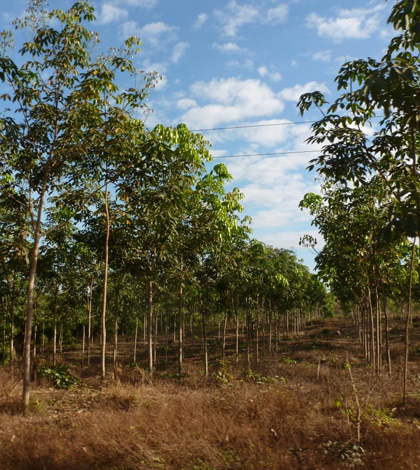Tire demand could grow Southeast Asia’s rubber plantations, threatening protected lands

Worldwide demands for rubber tires could have catastrophic impacts. (Credit: Eleanor Warren-Thomas / University of East Anglia)
Although vehicle ownership is decreasing in the U.S., worldwide demand for car and aircraft tires is rising. Meeting that demand will require millions of hectares of additional rubber plantations, an expansion that could have “catastrophic” impacts on biodiversity and water availability in Southeast Asia, according to a new study from the University of East Anglia.
The study projects that, within 10 years, another 8.5 million hectares of rubber plantations will be necessary to fulfill demands for natural rubber from the tire industry alone. Climate and soil conditions in Southeast Asia are ideal for rubber growth, and the researchers suggest that protected lands in the region will be cleared out for additional plantations. The claims aren’t baseless: More than 70 percent of Cambodia’s Snoul Wildlife Sanctuary was converted to plantation land between 2009 and 2013.
In the study, the researchers urge tire manufacturers to adopt more sustainable practices. About 70 percent of all natural rubber is used for tire production, the researchers say.
Top image: Worldwide demands for rubber tires could have catastrophic impacts. (Credit: Eleanor Warren-Thomas / University of East Anglia)




0 comments